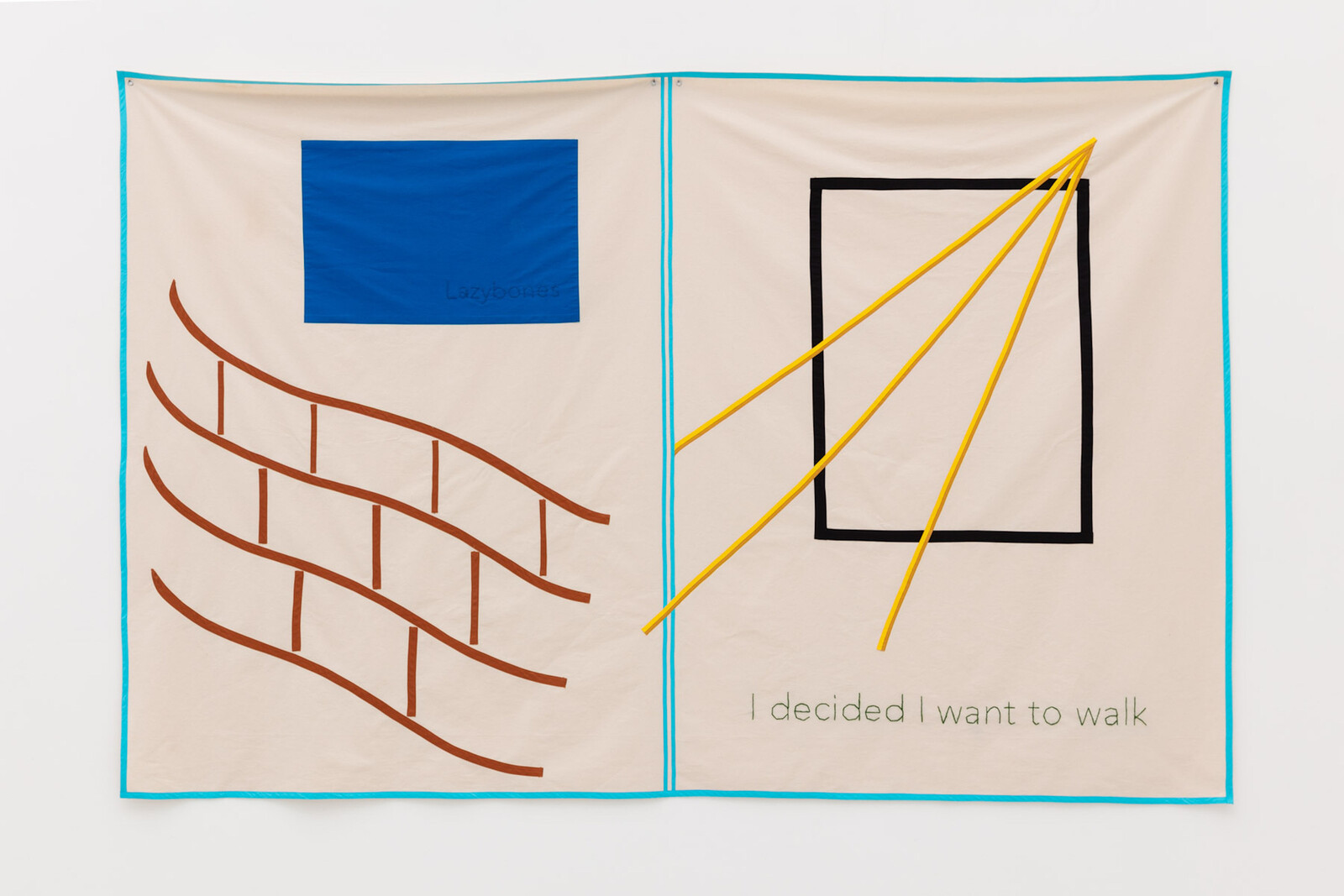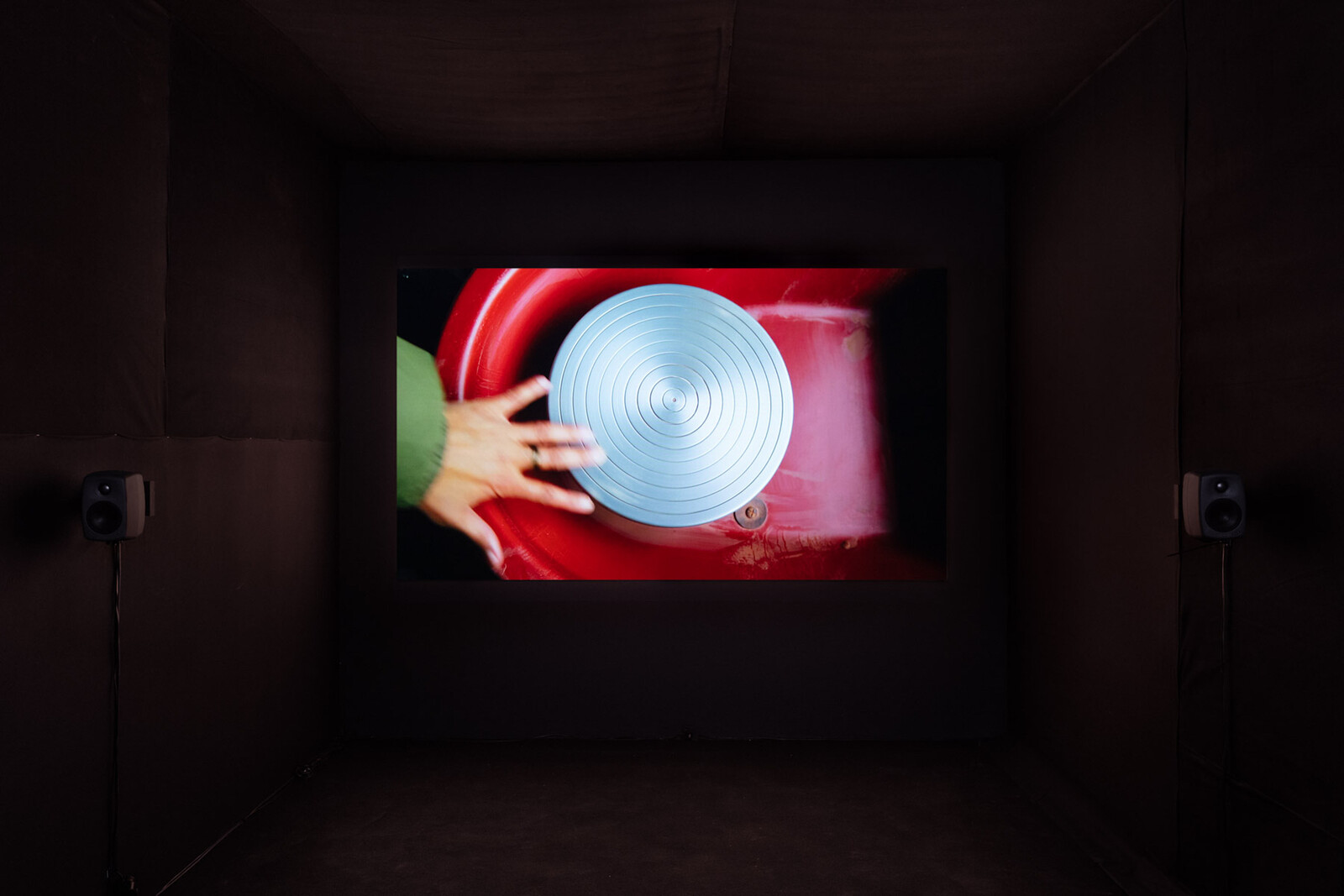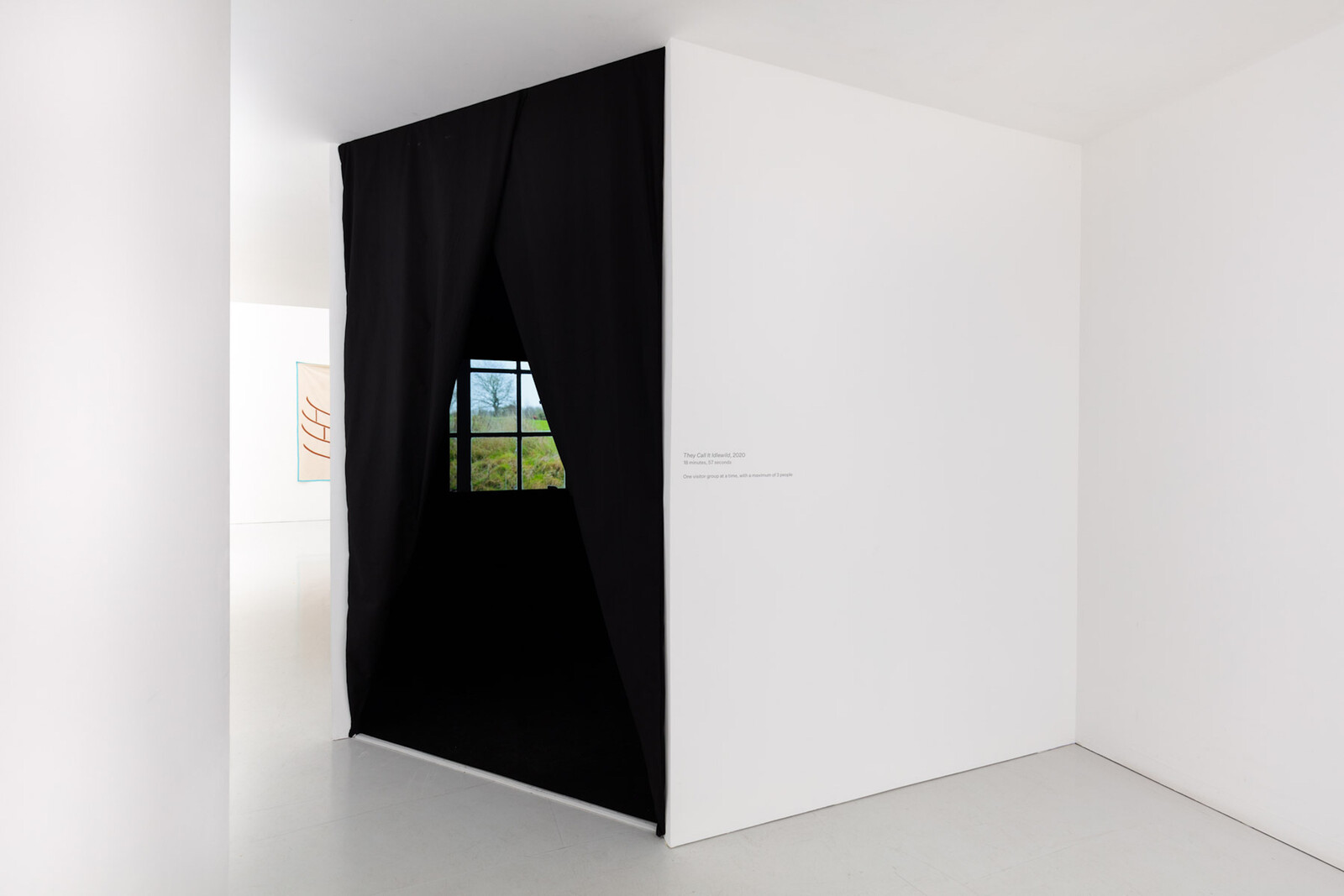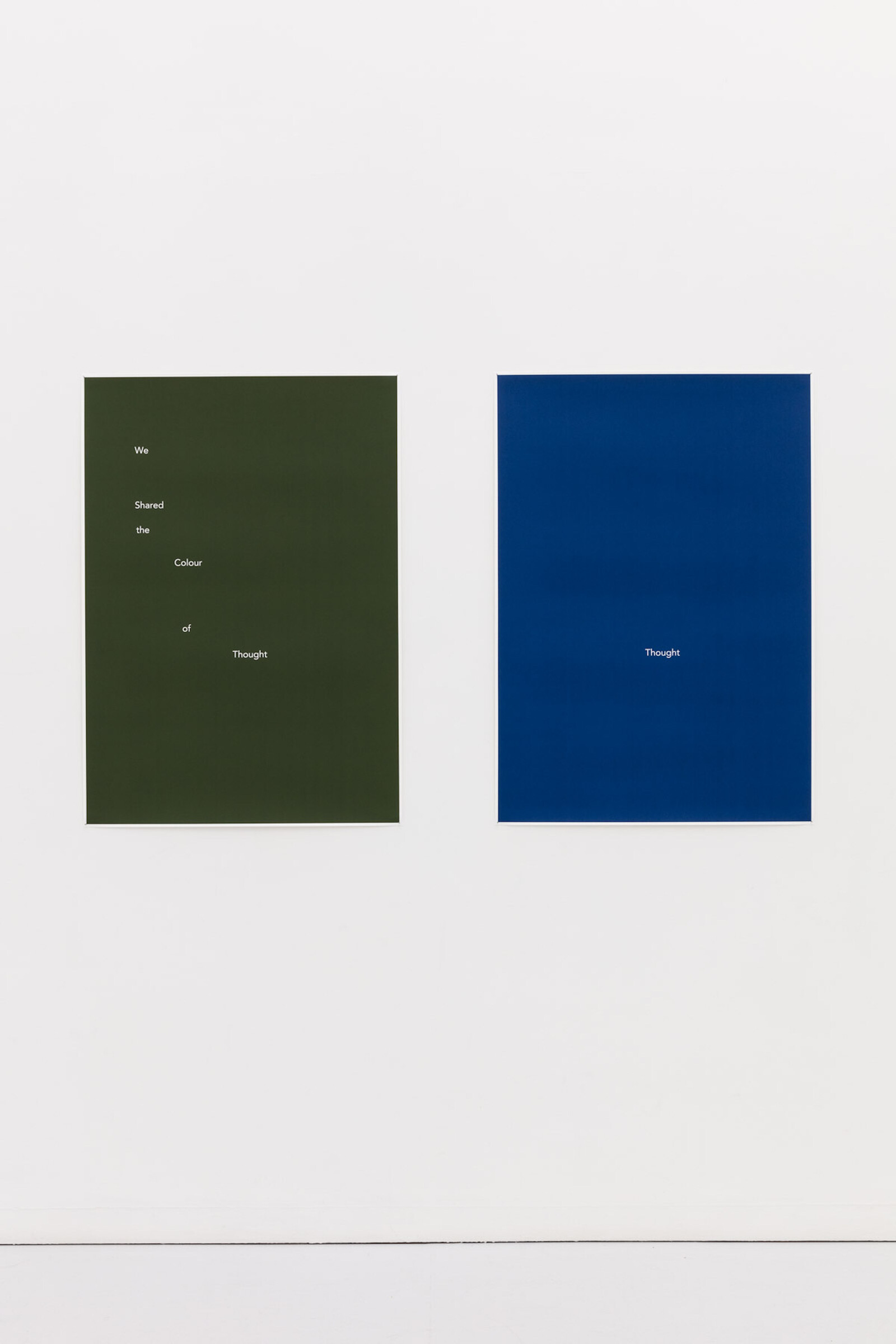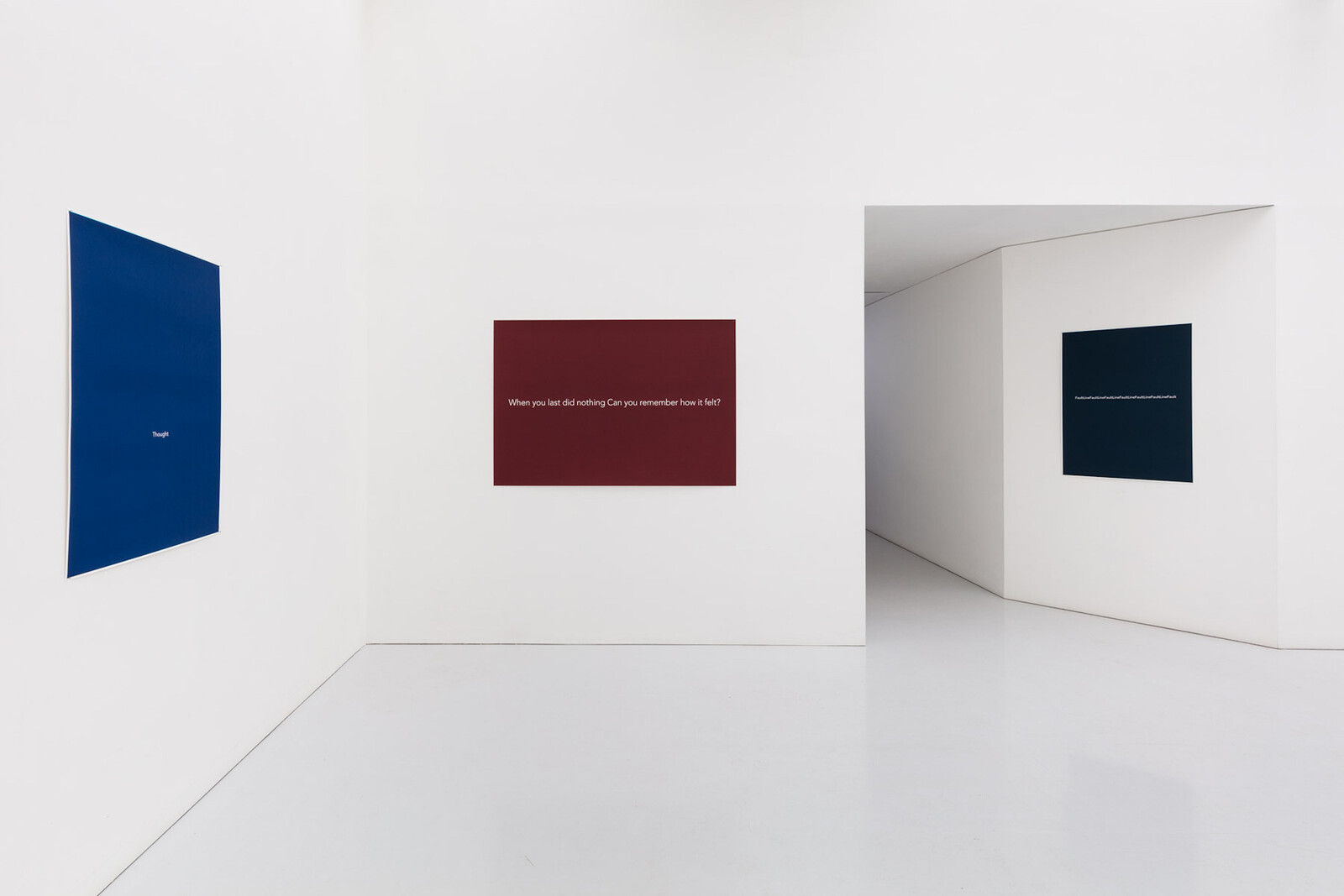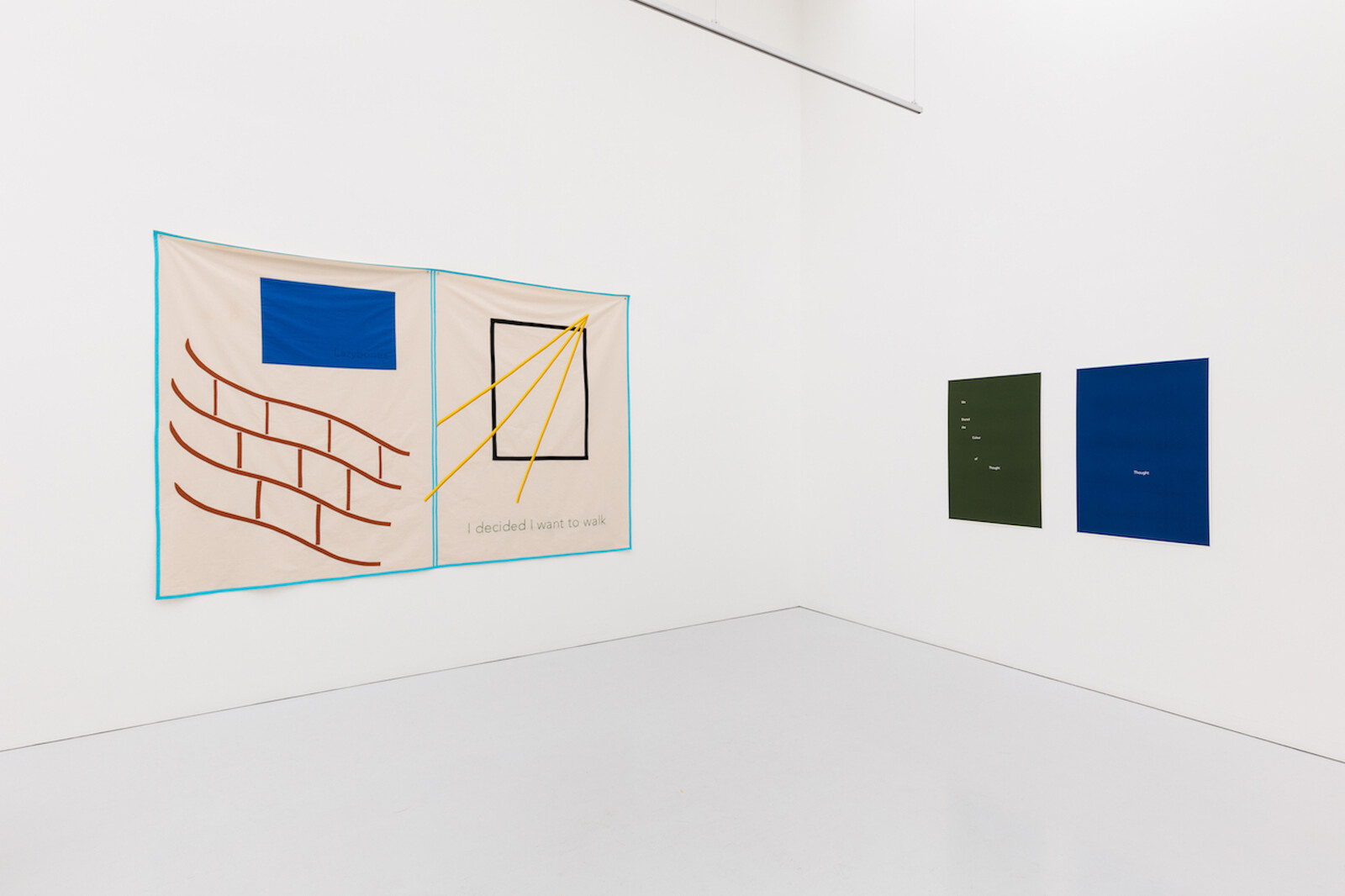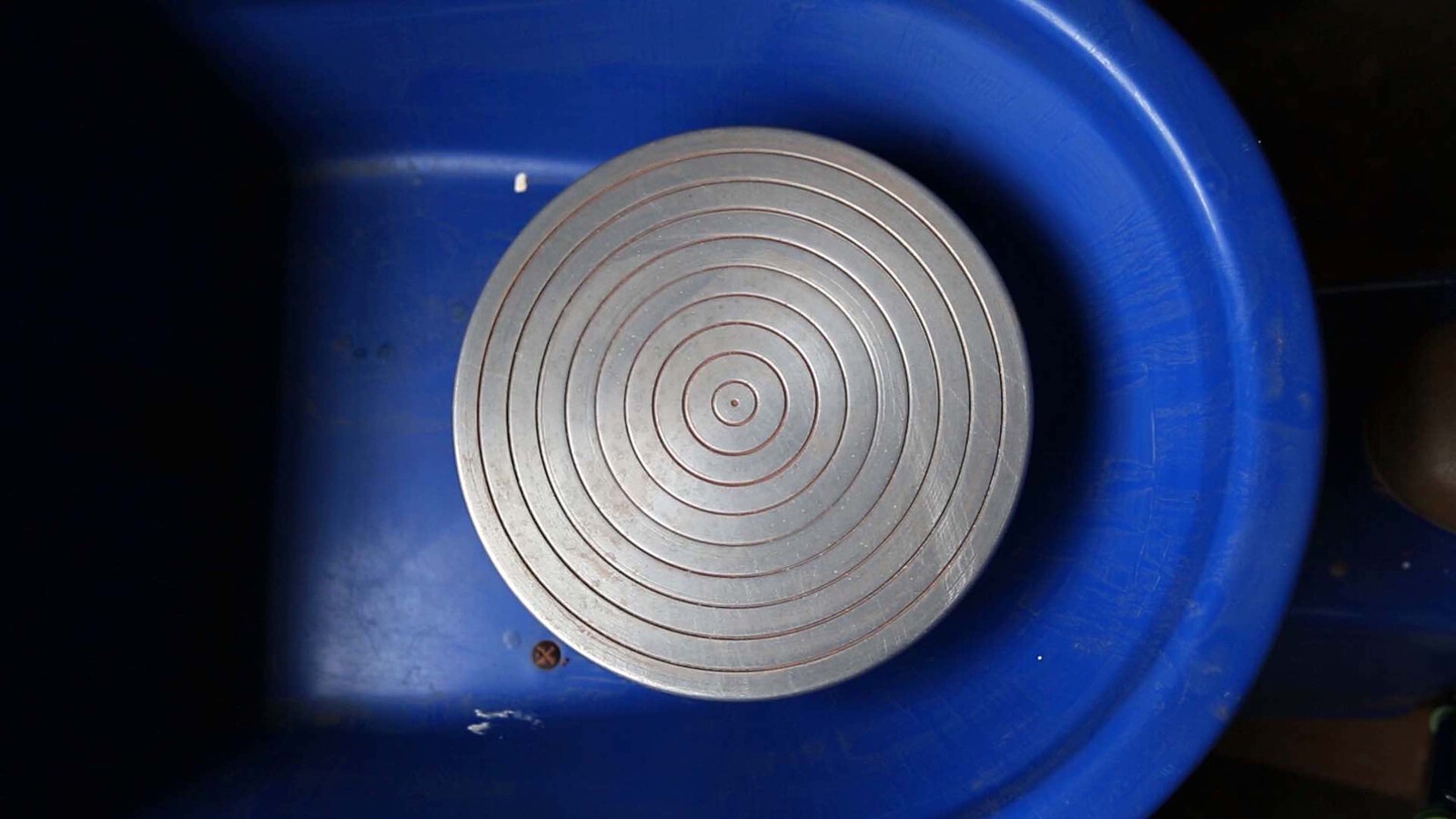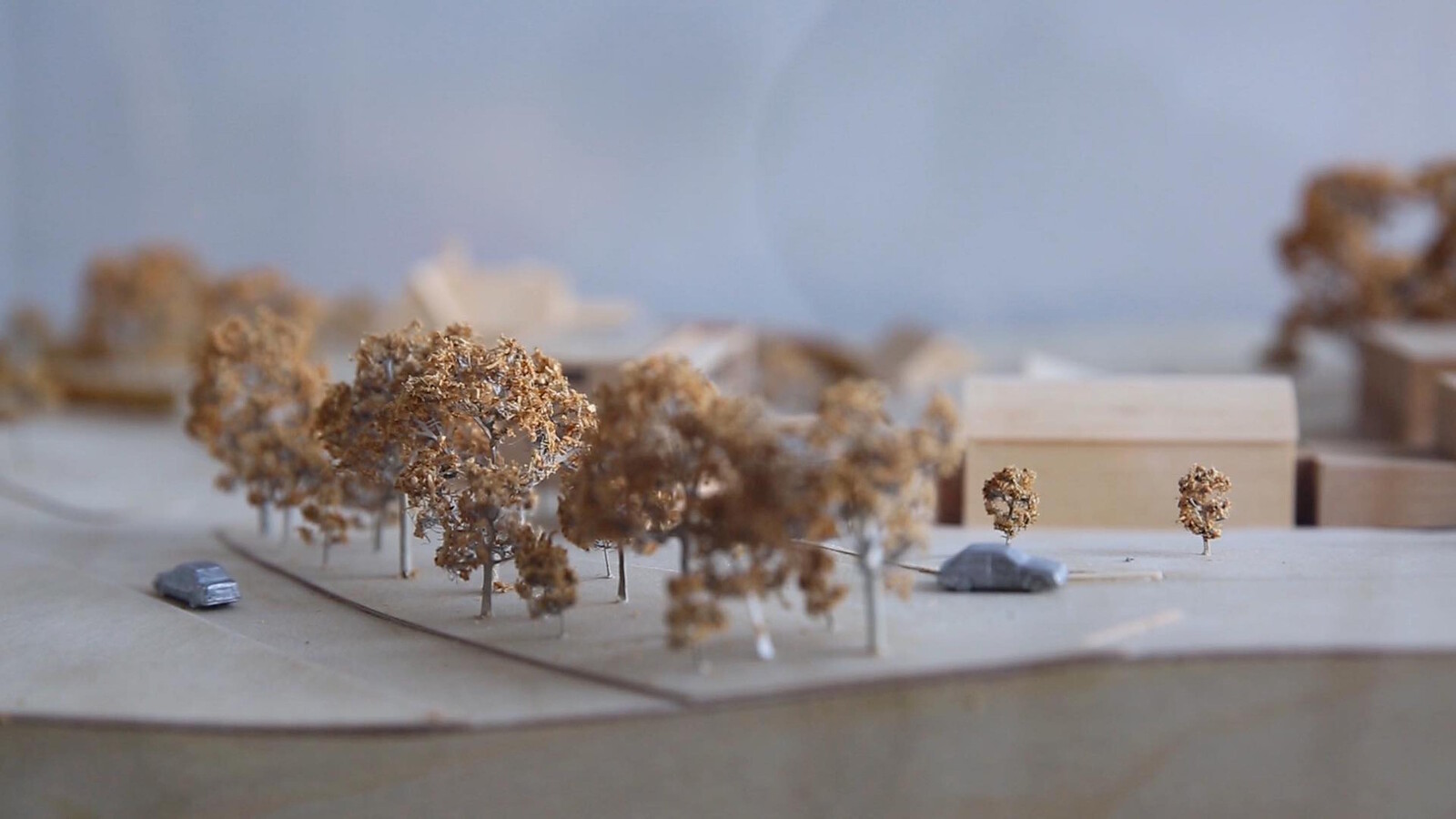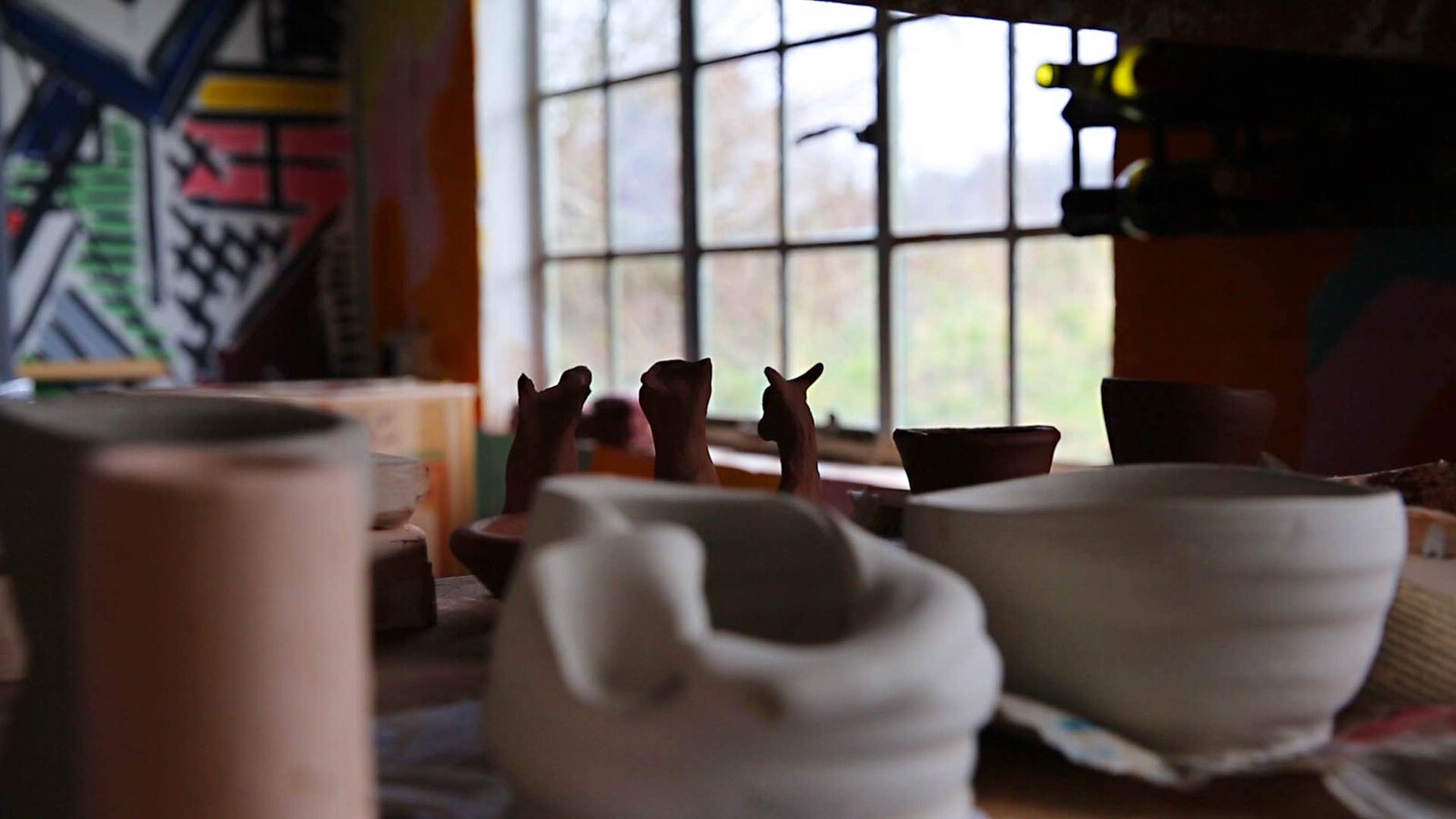Helen Cammock’s 19-minute video They Call It Idlewild (all works 2020) presents, in no particular order, the static framing of: a brick wall, a statue, a frayed cobweb, grasses dipping in the breeze. The result of a pre-lockdown residency at Wysing Arts Centre, it’s the first piece encountered by visitors to “I Decided I Want to Walk,” the artist’s first solo exhibition at Kate MacGarry in London. The video’s imagery documents a space of retreat in rural Cambridgeshire, overlaid with a voiceover in which the artist ventriloquizes writers including Audre Lorde, Mary Oliver, and James Joyce.
Beyond the compact screening room at the exhibition’s entrance, two printed billboards (originally installed at a short-lived March exhibition at Wysing) line the walls of the light-filled main gallery, interspersed with a selection of new screenprints. Both series feature irregularly spaced white text against a monochrome background (crying/ is/ never/ enough; We/ Shared/ the/ Colour/ of/ Thought), and endeavor to rewrite the narrative of laziness, and to question its motives. Who is entitled to idleness? Who is expected to maintain productivity? For whom, in this moment, is idleness an applauded civic duty, and for whom is it a shirking of responsibility? Across the exhibition, the questions posed by Cammock’s billboards are drawn into the present tense; in these times, Can you remember when you last did nothing? is more likely than usual to be met with an affirmative nod.
I first encountered They Call It Idlewild (named for a playhouse in Lucy Maud Montgomery’s 1908 novel Anne of Green Gables) on the screen of my laptop, streamed online due to the early closure of the show at Wysing. In the gallery, removed from the distractions of multiple tabs, unstable connections, the commands of pause and play, I enter the dark room to find the video playing on loop. A mosquito clings to a glass pane, a chimney exhales a steady stream of fog, a hand propels a bare pottery wheel anti-clockwise, then clockwise, over and over. This is the work on its own terms, indifferent to the presence of the viewer. I forget where it starts or finishes, aware only of the point of my initial encounter, which loops back around to meet me. “Bewilderment can be essential,” reasons Cammock’s voiceover, “yet we still move, tripping, stalling, with ever-grinding movement, either forward, backward, or sideways.” It is hard not to get swept into the video’s eddies, its anti-teleological rhythm.
The aesthetic of stillness which defines much of Cammock’s practice is achieved, paradoxically, through a persistent yet faint sense of motion, like a bird’s flight which from ground level appears an effortless hover, distance having disguised the exertion of its passage. Cammock’s solo presentation at London’s Cubitt in 2017 staged an installation in which visitors were invited to examine an extensive stamp collection through a magnifying glass; tiny slips of paper, symbols of global movement and cultural commemoration, gestured at lines of migration and displacement. “I Decided I Want to Walk” is deceptively still, but decidedly ambulatory. Idleness, for Cammock, is not defined by outward signifiers such as lack of motion—the video’s voiceover explains that for an angler, “stationary fishing is active,” while his moment of rest is in taking a walk—but is wayward, perhaps even vagrant, in its refusal of work.
Saidiya Hartman defines waywardness as “the unregulated movements of drifting and wandering; sojourns without a fixed destination, ambulatory possibility, interminable migrations, rush and flight, black locomotion; the everyday struggle to live free.”1 “I Decided I Want to Walk” recognizes the subversive possibilities of the idler’s active decision to do nothing; to live without a plot. The intentional refusal of labor becomes a fertile site of resistance, creative potential, and song. In the video, the artist’s stark a cappella cover of Johnny Mercer and Hoagy Carmichael’s 1933 Tin Pan Alley number “Lazy Bones” soundtracks shots of rust-colored orpine and tufted hairgrass. Cammock’s appropriation of the popular lyric amplifies the racialized stereotyping within the song’s portrayal of the indolent worker, “loafin’ in the shade all day.” In fact, the voiceover goes on to contend, it is the “plantation-owner, the land-owner, the person-owner, the knighted-landed-peer, the Tory MP with business interests that belong to him, but are never worked by him,” who is “the faithful lazy bones.”
Reminiscent of Hartman’s wandering subjects, who decline to live within the “clauses and parentheses” of the law, Cammock’s text evades the grammar which might seek to capture it. Punctuation is abandoned in favor of capitalization—When you last did nothing Can you remember how it felt?—and words drift and stray from the confines of syntax. A dark indigo print is cut across with a FaultLineFaultLineFaultLineFaultLineFaultLineFaultLineFault (it feels wrong to quote these works in text, when they read not so much as letters as shapes pierced in color). This is work built over a deep fracture, its composure precarious.
“I Decided I Want to Walk” showcases Cammock’s ability to condense sprawling, complex thought into moments of keen clarity. The broad canvas banner which serves as the exhibition’s namesake stitches an iconography of the idler: a cerulean rectangle, Wysing’s curved brickwork, and streaming sunlight gather the show’s imagery into precise forms, framed and divided by a slim turquoise border. The video’s “hunt for that light shaft of nothingness, in order for somethingness to scratch the back of the mind” finds its object in the single yellow beam that breaks the frame.
Saidiya Hartman, Wayward Lives, Beautiful Experiments (New York: W. W. Norton, 2019).
